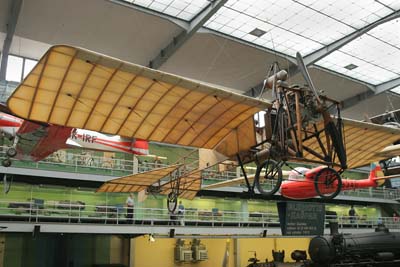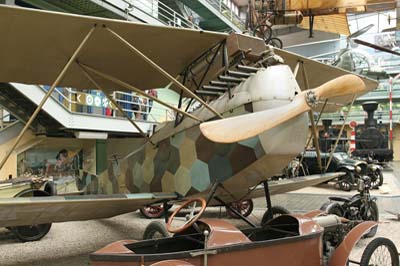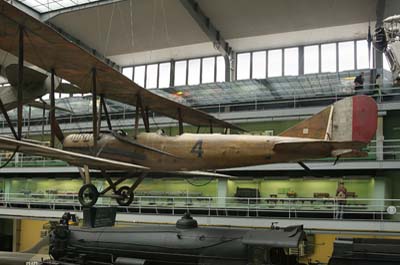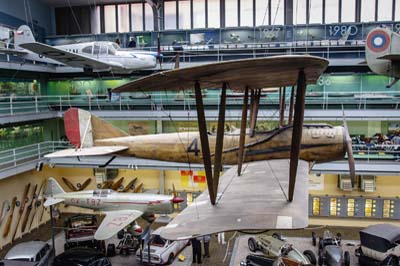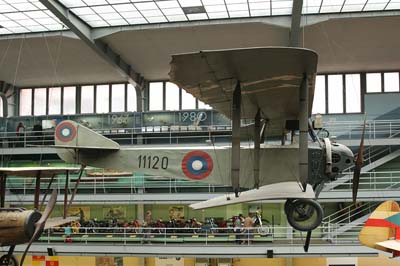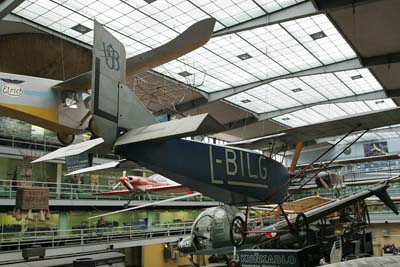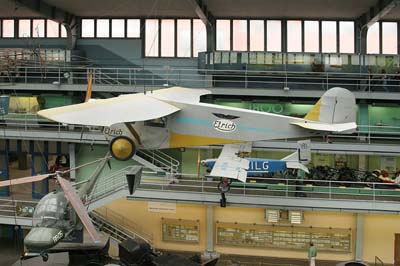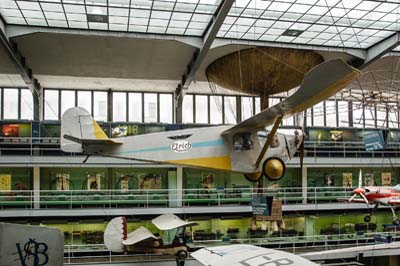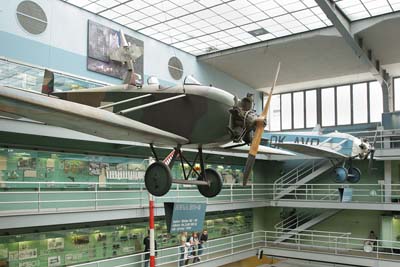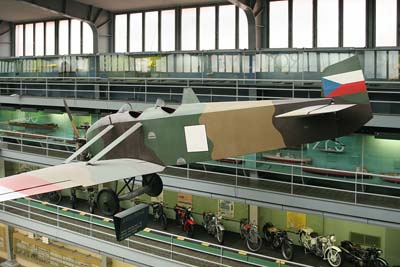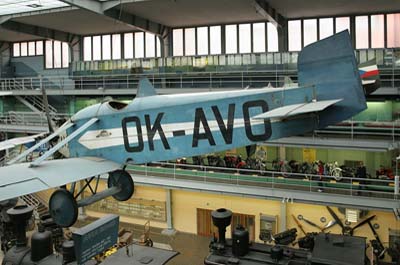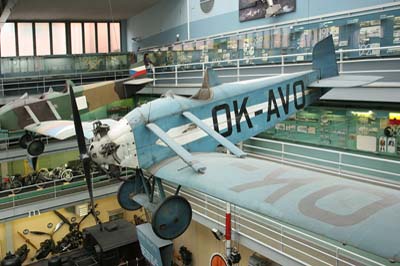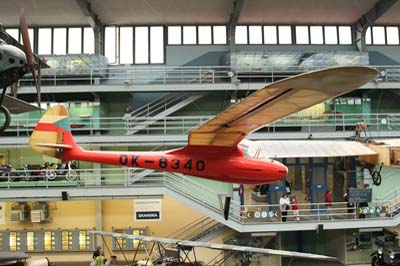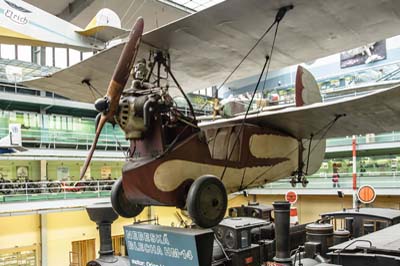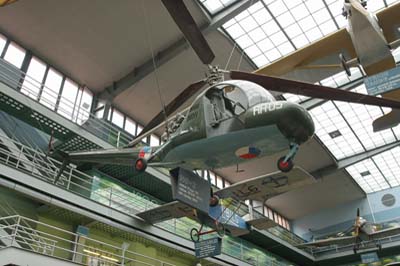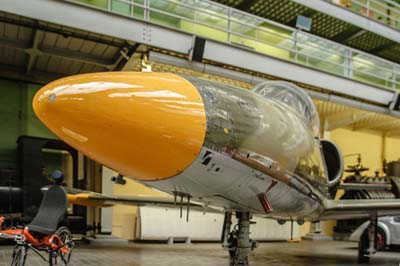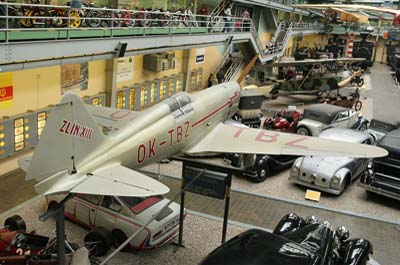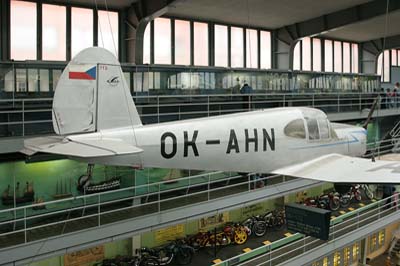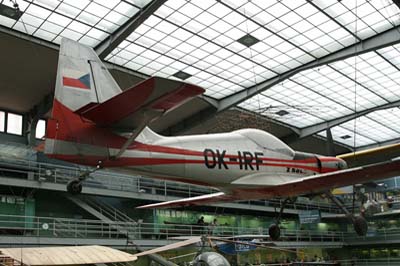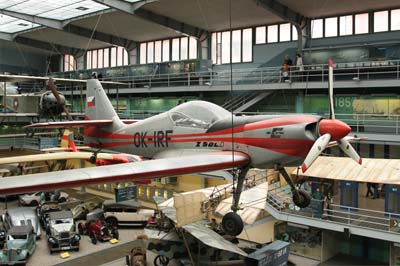Národní Tecnické Muzeum
(National Museum of Technology)
Prague, Czech Republic
September 2006
|
When visiting Prague (Praha) you must find time to visit this fine museum. However due to reconstruction the museum was closed shortly after my visit and remained closed in 2009, check the museum website for the latest information which shows that the museum re-opened in February 2011 after being closed for well over four years.
Situated in the northern part of the city in the Holesovice district on Kostelni street/road. It is easily reached on foot or preferably by tram (No's 1, 8, 25 or 26 to the tram stop 'Letenske namesti') from the town. It is open every day, except on Mondays, from 9:00 to 17:00. The collection consists of 15 vintage aircraft, nearly all are suspended from the high roof or perched on stilts. Photography is excellent despite the very crowded nature of the museum, as there are three levels of walkways that surround the tall and bright building. The light is natural and bursts through a translucent glass roof and side windows which is perfect for indoor photography. The hardest aircraft to shoot are at ground level this is because of the large amount of exhibits on show at ground level. The exhibits include; cars, motor cycles, railway steam engines and other items that you would associate with a technology based museum. Ten years ago there were only four aircraft on display, since then the aviation collection has expanded, it appears that exhibits are rotated from time to time. The museum apparently has 34 aircraft in its charge. |
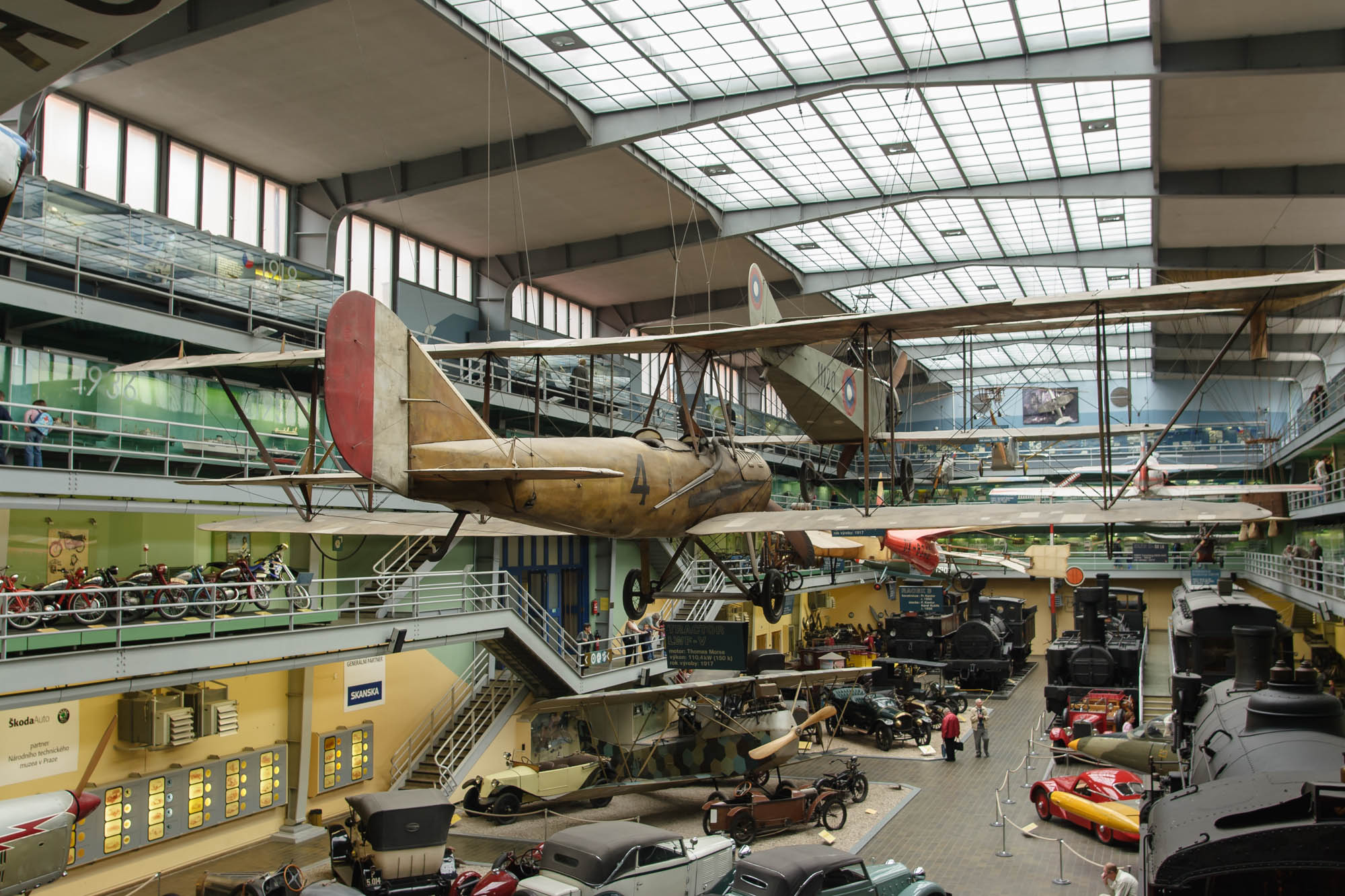 |
The museum is very light inside with most aircraft suspended from the roof.
|
Left to right: Blériot XI (no markings) built in 1910 and flown for the first time on April 16, 1910 by Jan Kaspar a well known Czech aviation pioneer. Following a series of accidents he rebuilt the mono-plane installing a Austro-Daimler engine. In 1911 he acheived recognition for a series of long-distance flights only to retire from flying in 1913 when he donated his aircraft to the Museum.
Knoller C.II (119.15) Restored in 1988 this Austrian built fighter-reconnaissance bi-plane proved to be very difficult to fly. Shortly after the first aircraft was delivered in 1917 during a test flight the wings failed and the aircraft crashed killing the crew. All orders were subsequently cancelled and completed aircraft grounded. It was armed with two machine-guns and also a bomb bay for three 88il (40Kg) bombs.
L.W.F model F Tractor (4). The L.W.F Company was named after its founders, Edward Lowe, Charles Willard and Robert Fowler and was formed in 1915 in the United States. The Model F first flew in August 1917 and is the sole survivor of this two-seater wooden biplane designed for the US Army. This example was used by Czechoslovakian forces against the Central Powers in Russia during World War One. In 1918 the Tractors were moved north to Siberia to engage the Red Army before being shipped to Czechoslovakia where they were put into store, later this one was given to the museum in 1939. |
Left to right: Anatra Anasalj (010.091 marked as '11120') Russian (Odessa) built aircraft dating back to 1917 and is one of 70 constructed before the Russian Revolution of November 1917. Problems with the fuel system caused a number of in-flight fires, but still continued until the late 1920s before being withdrawn from service.
Kuňkadlo (L-BILG), built by Vladimir and Bohuslav Simūnkové in 1925.
Etrich E.VIII Taube Limusina (Dove Limosine) (no markings) built in 1928. Ignaz "Igo" Etrich was born in Austrian-Hungarian in 1879 in what is now the Czech Republic. He built his first aircraft the Etrich I in 1907. The Etrich II Taube flew in 1910 but unfortunately Etrich broke his spine when his aircraft crashed tail first, he died in Austria in 1967.
The Etrich Taube aircraft was developed by Igo Etrich from Austria in 1909, with the first flight in 1910. The design was licensed by Igo Etrich to Lohner-Werke in Austria and to Edmund Rumpler in Germany who initially named the examples he built the Etrich-Rumpler Taube. Rumpler later changed the name to Rumpler-Taube and stopped paying royalties to Etrich who subsequently abandoned his patent. |
| Left to right: Avia BH-9 (in anonymous military markings) built 1924 in Prague and Avia BH-10 (OK-AVO) also built in 1924 for the air force and used for aerobatics training, before being transferred to local aero clubs. |
Left to right: Racek 3 (OK-8340) built in 1936.
Nebeskā Blecha HM.14 (Mignet HM.14 Pou du Ciel 'Flying Flea') (no markings) built in 1937.
Aero HC-2 Heli-Baby (RA-05). A two-seater helicopter built in 1954 and up to 200 served with the Czech Air Force.
Aero Vodochody L-39C Albatros (0107). The L-39 was constructed in Czechoslovakia as a successor to their earlier trainer, the L-29 Delfin. The first flight was in 1968 and over 2,800 were built. |
Left to right: Zlin Z-XIII (OK-TBZ) Designed by Jaroslav Lonek and built by the Bata factory in Zlin, Czechoslovakia in 1937 as a two-seat trainer. It was later converted to a single-seat racing plane for the Circuit l'Est race in France in 1938 but although it attended it was not ready to fly. The Nazi occupation of 1939 prevented more than this sole example from being built. It was handed to the museum after the war and restored by them in 1989-90.
Let Mraz M.1A Sokol (OK-AHN c/n 118) a three seat light aircraft built from the late 1940s for Czech flying schools.
Zlin Z- 50LA (OK-IRF) built in 1977. |

